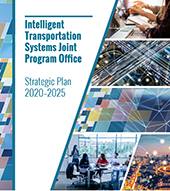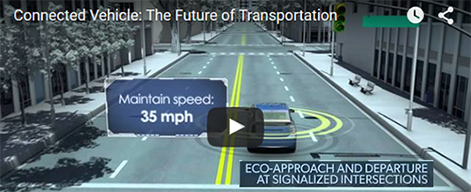
About
The Intelligent Transportations Systems Joint Program Office (ITS JPO)
OUR VISION:
Transform the way society moves.
OUR MISSION:
Conduct research, development, and education activities to facilitate the adoption of information and communication technology to enable society to move more safely and efficiently.
Planning for the Future of ITS
The ITS Joint Program Office’s 2020-2025 ITS Strategic Plan
More About ITS

Current Research
The U.S. Department of Transportation’s ITS research focuses on several high-priority areas including Emerging and Enabling Technologies, Data Access and Exchanges, ITS Cybersecurity Research, Automation, Complete Trip – ITS4US, and Accelerating ITS Deployment. The ITS Strategic Plan includes in-depth discussion of the ITS Program’s strategic goals, these research areas, and four technology transfer programs.
Learn more in the 2020-2025 ITS Strategic Plan.
Research Areas

Intelligent Transportation Systems Deployment
| Connected Vehicle Pilots | ||
|
View NYCDOT pilot |
View THEA pilot |
View WYDOT pilot |
ITS Deployment
- ITS4US
- Vehicle-to-Infrastructure Resources
- Connected Vehicle Pilots
- Connected Vehicle News and Events
- Connected Vehicle Deployer Resources
- Connected Vehicle Deployment Assistance
- Connected Vehicle Applications
- Sample Deployment Concepts
- Connected Vehicle Publications
- National ITS Architecture
- Smart City Challenge

Technology Transfer
  |
  |
Technology Transfer Links

Contact Us

About ITS
The page you are looking for has been removed, or had its location changed. Please visit the Intelligent Transportation Systems (ITS) home page or the ITS Site Map to locate the page.
Contact the ITS Webmaster at itsweb.master@dot.gov for any questions.
Thank you!
1200 New Jersey Avenue, SE • Washington, DC 20590 • 800.853.1351




